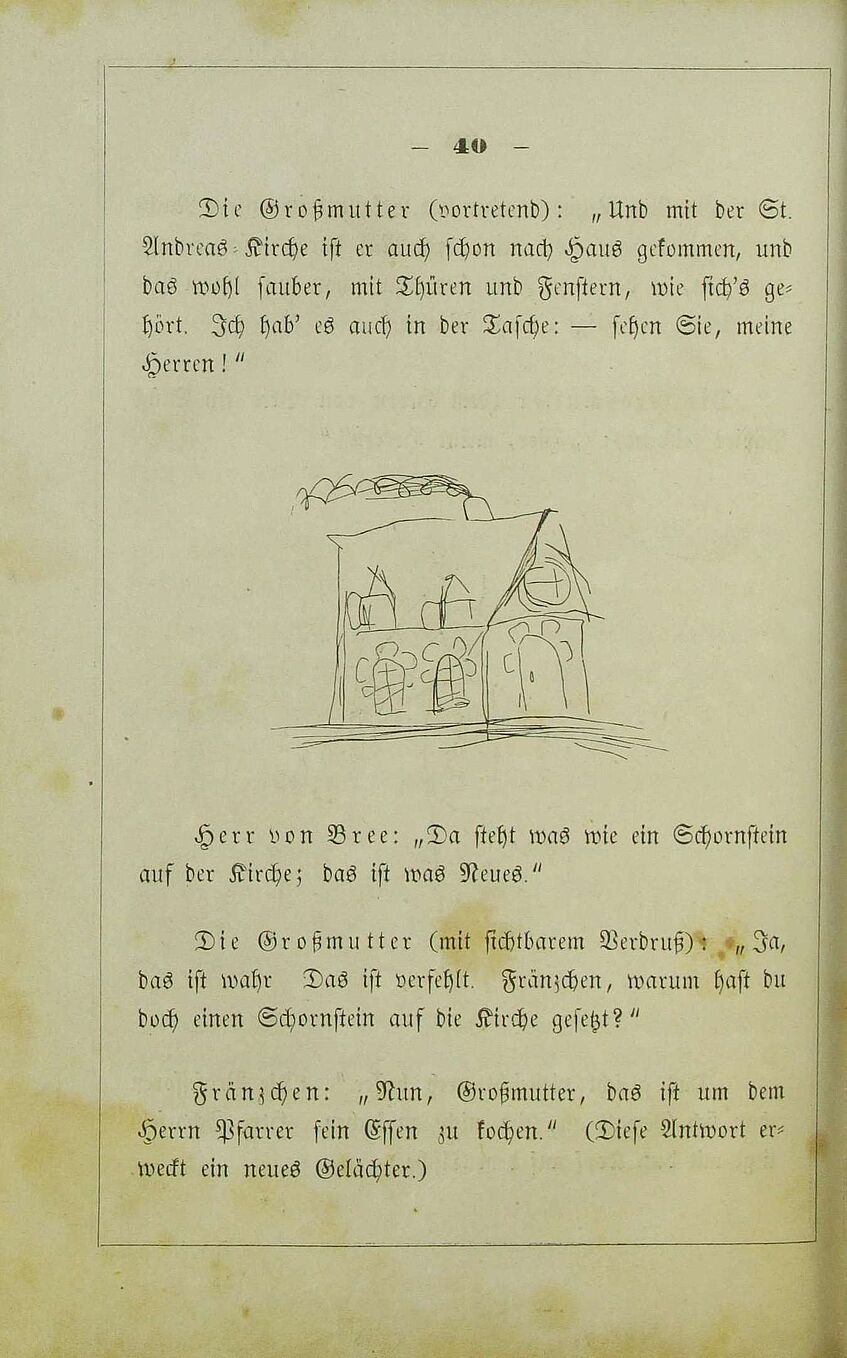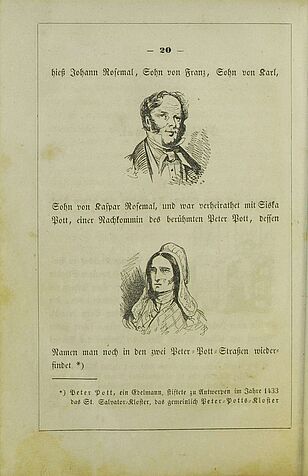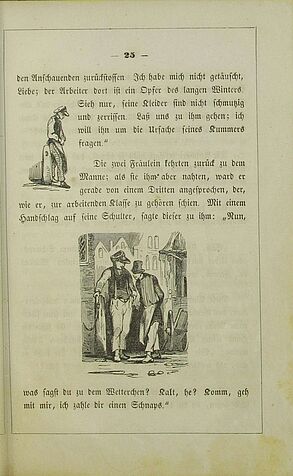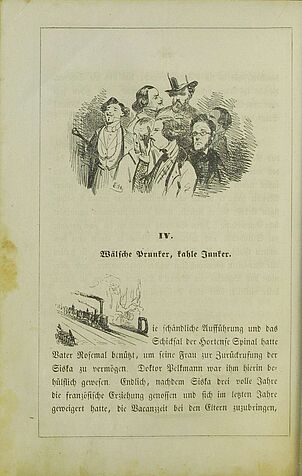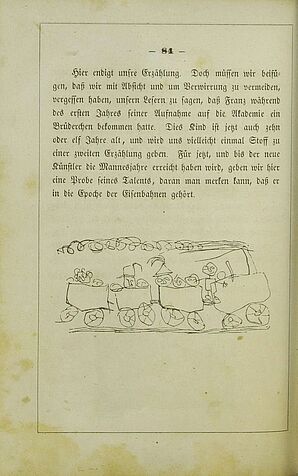Illustrations
Frontispiece of Flämisches Stillleben (second edition, Regensburg 1845)
Illustration from Wie man Maler wird (second edition, Regensburg 1845)
Illustrations
In the second edition of Flämisches Stillleben, all three stories are accompanied by a selection of illustrations from the source texts. As the preface explains, Hendrik Conscience and his publisher J.E. Buschmann provided the illustrations to Von Diepenbrock. In his time, Buschmann’s publications were highly valued for the quality of their illustrations (Simons 56). Among the many illustrations in Flämisches Stillleben are woodcuts by Henry Brown based upon drawings by Edward Dujardin, Gustaaf Wappers, J. Mathysen, and others.
The book illustrations in Flämisches Stillleben increase the engagement of the readers with Conscience’s texts in different ways. The frontispiece in Flämisches Stillleben, picturing the deathbed scene from Siska Rosemal, anticipates on one of the most emotional moments in the text and as such stimulates the reader’s emotional involvement with the story. Other illustrations metaphorically represent the feelings or ideas evoked by the texts. Illustrations such as the small portraits of the main characters in Siska Rosemal or Wie man Maler wird serve as an extra means of characterization and support the readers in their imagination of the story world. The observations and social categorizations made by the protagonists are often visualized for the reader as well. When Anna and Adele judge the appearance of a working class man waiting at the Vrijdagmarkt in Was eine Mutter leiden kann, the scene is illustrated by two drawings of the waiting man. This way, the readers are encouraged to actively imagine the reality pictured in the stories and illustrations. At the same time, the illustrations limit and direct this imagination.
In Wie man Maler wird, most illustrations represent the artistic development of the protagonist, who aspires to become a painter. Depicting his progress from a very young age, the pictures cause a humoristic effect, upon which the text often anticipates. In the preface, these illustrations are used to accentuate the truthfulness and authenticity of the story about the “noch lebenden namhaften” artist by claiming that some illustrations are really made by him (Diepenbrock von XII).
Select Bibliography
Conscience, Hendrik. Flämisches Stillleben, in drei kleinen Erzählungen. Translated by Melchior Diepenbrock von, 2nd ed., Pustet, 1845.
Couttenier, Piet. “‘Verbeeld U’. Illustraties in de Vlaamse historische romans van de negentiende eeuw.” De steen van Alciato. Literatuur en visuele cultuur in de Nederlanden. Opstellen voor prof. dr. Karel Porteman bij zijn emeritaat. The Stone of Alciato. Literature and Visual Culture in the Low Countries. Essays in Honour of Karel Porteman, edited by Marc Van Vaeck et al., Peeters, 2003, pp. 633–53.
Diepenbrock von, Melchior, translator. “Vorrede.” Flämisches Stillleben, in Drei Kleinen Erzählungen, 2nd ed., Friedrich Pustet, 1845, pp. VII–XIV.
Simons, Ludo. Het boek in Vlaanderen sinds 1800. Een cultuurgeschiedenis. Lannoo, 2013.


